Podcast: Play in new window | Download (Duration: 15:44 — 16.1MB)
Sign up for our mailing list! Buy our merch!
Thanks to “dog freak Ruby,” we’re going to learn about some animals that aren’t exactly domesticated but aren’t really wild either.
Further reading:
Mongolian horse and its person:
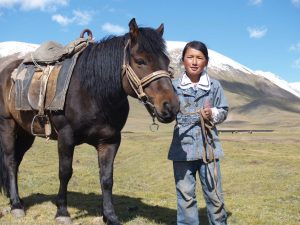
Mongolian horses:
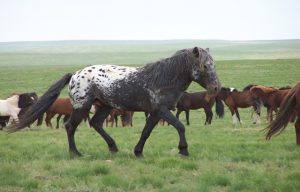
OH MY GOSH HEART HEART HEART (photo from this website):
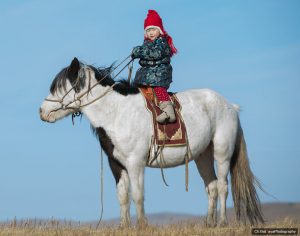
Dingos!
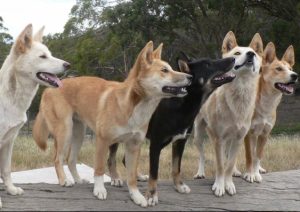
An artist’s rendition of the Fuejian dog (left) and a picture of the cuelpo (right):

The cuelpo, happy fox-like canid:
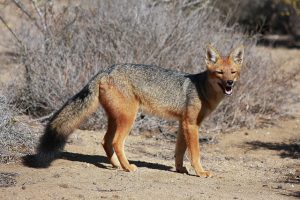
A very fancy rat:
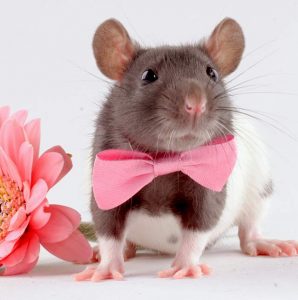
Show transcript:
Welcome to Strange Animals Podcast. I’m your host, Kate Shaw.
Before we get started, and before I forget again to tell you about this, I’m planning a bonus Q&A episode for August. If you have any questions about the podcast, podcasting in general, me, or anything else, feel free to email me at strangeanimalspodcast@gmail.com, or otherwise contact me through social media!
A few episodes ago I mentioned in passing that the Australian dingo is a type of feral dog. It’s a more complicated situation than it sounds, so while I didn’t want to confuse the issue at the time, I kept thinking about it. Then I remembered that a listener emailed me a while back wanting to know more about how dogs were domesticated. We covered the topic pretty thoroughly back in episode 106, but I realized that there’s an aspect of domestication we didn’t cover in that episode. So thanks to “dog freak Ruby,” here’s an episode about a few animals that are only semi-domesticated.
Domestication, after all, isn’t a switch you can flip. It’s a process, and depending on the animal species and the circumstances, it can take a really long time. It’s not the same thing as taming an animal, either. An individual animal might become tame with the right treatment, but that doesn’t mean any individual of that species would react the same way. Domesticated animals show genetic changes that their wild counterparts don’t, changes that make them more likely to treat humans as friends instead of potential predators.
Generally, a fully domesticated animal requires some level of care from a human to survive, even if it’s just feral cats living near humans so they can find and kill rodents and avoid most predators. Feral domesticated cats don’t live the same way as their wild ancestors do. But sometimes it’s not as cut and dried as it sounds. While mustangs and other feral horse populations are considered domesticated animals, they live like wild animals and don’t need humans to survive. They mostly just need humans to leave them alone so they can thrive on their own. But if you capture a mustang that’s lived its whole life in the wild, with the right treatment it will eventually become tame, because its ancestors were bred for thousands of years to trust and depend on humans.
That brings us to our first semi-domesticated animal, the Mongolian horse. Yes, I’m still really into Mongolia and the Hu, and I’m excited to say I have tickets to see the Hu twice in concert this fall, if everything goes well. I’ve been listening to a program called the Voice of Mongolia in English, which is primarily a shortwave radio program but it’s also released as a podcast, and it talks about various aspects of Mongolian culture. Recently they had an episode about horses, so some of my information comes directly from that show.
Mongolia is a country in central Asia that’s mostly open steppes, which is a type of grassland. The soil isn’t right for most crops, but it’s great for horses. The people of Mongolia are traditionally nomadic, moving around from place to place to find grazing for their horses and other livestock, and about half of the current population still lives this way.
The Mongolian horse is a small, tough breed that probably hasn’t changed much in the last thousand years, possibly longer. It’s one of the oldest breeds of horse in the world and the ancestor of many other horse breeds. For a long time people assumed it was the domesticated descendant of the wild Przewalski’s horse, but genetic testing has determined that domestic horses developed from a different wild horse species that’s extinct now. Genetic testing also showed that the Mongolian horse has the highest genetic diversity of any horse breed tested. It’s incredibly strong for its size, can gallop for miles without tiring, has strong hooves that never need trimming or shoeing, and seldom needs or receives veterinary care.
The main reason for all these traits is that Mongolian horses live like wild horses in most ways. They live loose, grazing as they like, and if they get too far away from their humans, the owners will go out to find them. But they’re still domesticated. Mare’s milk is an important part of the Mongolian diet, so the mares are used to being milked, and people use their horses to ride, carry packs, and pull carts. The stallions are frequently raced. At the same time, though, they’re not really pets. Mongols don’t give their horses names, but instead refer to them with a detailed description. The Voice of Mongolia in English says the Mongolian language has over 300 words to describe horses, while Wikipedia says it’s over 500. Either way, the terminology is so precise that everyone knows exactly which horse someone’s talking about, which if you think about it is more useful than a name.
The Australian dingo is in a similar situation. It’s considered a feral dog breed, but it doesn’t need people to survive. Most feral dogs throughout the world barely scrape by, eating garbage and rats and often dying of starvation or disease. Dingos live like wild animals and do just fine. But at the same time, they’re happy to hang out with people from time to time, acting as hunting companions who are neither dependent on humans nor frightened of them.
The dingo is a strong, tough, lean dog that stands around 22 inches tall at the shoulder, or 56 cm. It has flexible joints like the Norwegian lundehund we talked about in episode 230, which allows it to climb cliffs and fences and otherwise navigate difficult terrain. It’s usually a yellowy or ginger color, sometimes with small white markings, although some dingoes are black and tan. It can survive on very little water. It often hunts in packs and will hunt animals larger than it is, like the red kangaroo.
The dingo was probably brought to Australia by humans, although we’re not sure when. Dingo fossils have been found dating to 3,500 years ago in western Australia, so it was at least that long ago. Genetic studies show that the modern dingo and the dingo of 3,500 years ago are pretty much identical. It also shows that it’s definitely a domestic dog, related to other dog breeds that were once common in Asia around 7,000 years ago, but which are rare now. It’s most closely related to the New Guinea singing dog, which makes sense since New Guinea is so close to Australia. Until somewhere between 6,500 and 8,000 years ago, New Guinea and Australia were connected when sea levels were low. Genetically the two dog breeds have been separated for about 8,300 years, which suggests that the dingo has been in Australia for at least that long.
Traditionally, Aboriginal Australians would take a dingo puppy from its den to keep as a pet, a hunting dog, or sometimes a herding animal. Sometimes the dingo would stick around when it was grown, but sometimes it would return to the wild. There’s a lot of controversy about breeding dingoes as pets, since it would be easy to breed the wild traits and behaviors out. Since the dingo has been killed as a livestock pest since white settlers arrived in Australia, in many places its numbers are in decline and there are worries that the wild dingo could go extinct. There are already problems with the dingo cross-breeding with other dog breeds. It’s a complicated topic, because while the dingo is a dog, it’s not precisely domesticated at this point but also not precisely a wild animal.
There used to be a domesticated canid in South America called the Fuegian dog, which was probably used as a hunting dog, especially to hunt otters. On cold nights, the dogs would wrap themselves around their people like living blankets so everyone stayed nice and warm.
The Fuegian dog wasn’t a dog, though. It was the domesticated form of the culpeo, also called the Andean fox. It’s actually not a fox although it looks a lot like one. It’s related to wolves and jackals, and it lives on the western slopes of the Andes Mountains all the way down to the southern tip of Patagonia. It eats small animals like rodents and introduced European rabbits. While the culpeo is sandy or tawny in color with gray on its back and a black tip to its tail, the Fuegian dog was sometimes brown and white or all white. Reportedly the Fuegian dog was not very tame in general and was an aggressive animal compared to actual dogs. It would hunt on its own and basically acted like a wild animal that just happened to hang out with humans a lot, like the dingo does today.
The culpeo is doing just fine, but the Fuegian dog is extinct. The Fuegian dog was tamed by a Patagonian people called the Selk’nam [shelknam], or ‘Ona, who were nomadic hunter-gatherers. They lived in such a remote part of South America that Europeans didn’t encounter them until the late 19th century when settlers showed up to raise sheep and rubber trees. We’ve talked about what happened to them in a previous episode, although I can’t remember which one. The Selk’nam didn’t understand the concept of livestock, so they figured those sheep were literally fair game. The sheep were living on their own hunting grounds, after all. The Selk’nam killed some of the sheep, and in retaliation, the European settlers murdered all the Selk’nam. I was going to tell you the name of the man who started the genocide, but I don’t think anyone should remember his name. It wasn’t just “oh, you killed my sheep, I’m going to shoot you because I’m mad,” either. There was a bounty on Selk’nam people, and that’s all I’m going to say because it’s just too awful and disturbing.
By 1930, only about 100 Selk’nam remained alive, and the very last member of the people, Ángela Loij, died in 1974. There’s a link in the show notes to a page with lots of information about her as a person.
In 1919 when Christian missionaries visited what was left of the Selk’nam, they discovered that all the dogs had been killed off by the people themselves because the dogs were too fierce and killed livestock. It sounds like a last, desperate attempt by the Selk’nam to stop the murder of their people by keeping their dogs from killing any sheep. But by then it was too late, and the genocide wasn’t really about the sheep in the end. It was racism and hatred. Remember that all people are equal, no matter what they look like or how they live. Don’t ever let anyone tell you otherwise.
Okay. Let’s finish with the story of another semi-domesticated animal, one that doesn’t involve people being terrible to each other. The kind of rat you can buy as a pet is considered semi-domesticated, and it hasn’t actually been domesticated for very long. The person mainly responsible for the pet rat is a man called Jack Black. Not the actor Jack Black; this was a different guy who lived in the mid-19th century.
Jack Black was a ratcatcher in London, England who said he was the Queen’s official rat-catcher even though he wasn’t. He was definitely an extravagant character who always wore what he called his uniform, which included a big leather sash over one shoulder decorated with rats made of iron, a crown, and the initials V.R. for Victoria Regina, or Queen Victoria. He told people the queen herself gave him the sash, but actually his wife made it for him. Black also carried a big domed cage with him to hold the rats he caught.
He mainly caught rats to sell to people who were training their dogs to kill rats, which was also a popular thing to watch. I mean, that doesn’t sound like any fun to me but this was before video games were invented. Occasionally, though, Black would catch a rat that had interesting markings or that was an unusual color. These rats he would keep, tame, and breed to produce more rats with different colors and patterns. He sold the tame, pretty young rats to people as pets. He especially liked white rats, which made popular pets then and are still popular today.
Pet rats, usually called fancy rats, are a subspecies of the brown rat, or Norway rat, which we talked about in episode 143. We also talked about Jack Black briefly in that episode, but at the time I didn’t realize he wasn’t really a royal rat catcher. By 1900 fancy rats were popular pets and remain so today, and are becoming more and more domesticated. If they’re not fully domesticated they’re well on their way, all thanks to a guy who thought rats were neat.
You can find Strange Animals Podcast at strangeanimalspodcast.blubrry.net. That’s blueberry without any E’s. If you have questions, comments, or suggestions for future episodes, email us at strangeanimalspodcast@gmail.com. If you like the podcast and want to help us out, leave us a rating and review on Apple Podcasts or Podchaser, or just tell a friend. We also have a Patreon at patreon.com/strangeanimalspodcast if you’d like to support us for as little as one dollar a month and get monthly bonus episodes. There are links in the show notes to join our mailing list and to our merch store.
Thanks for listening!